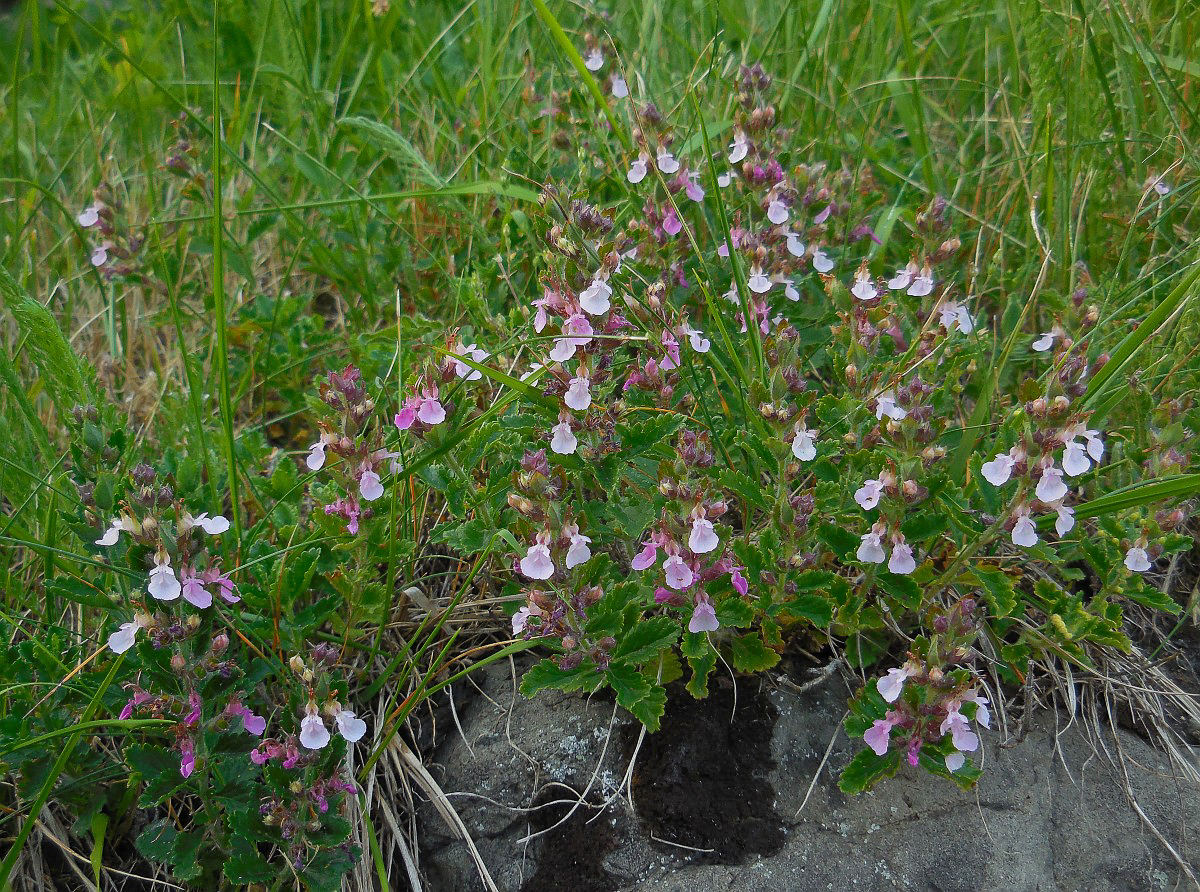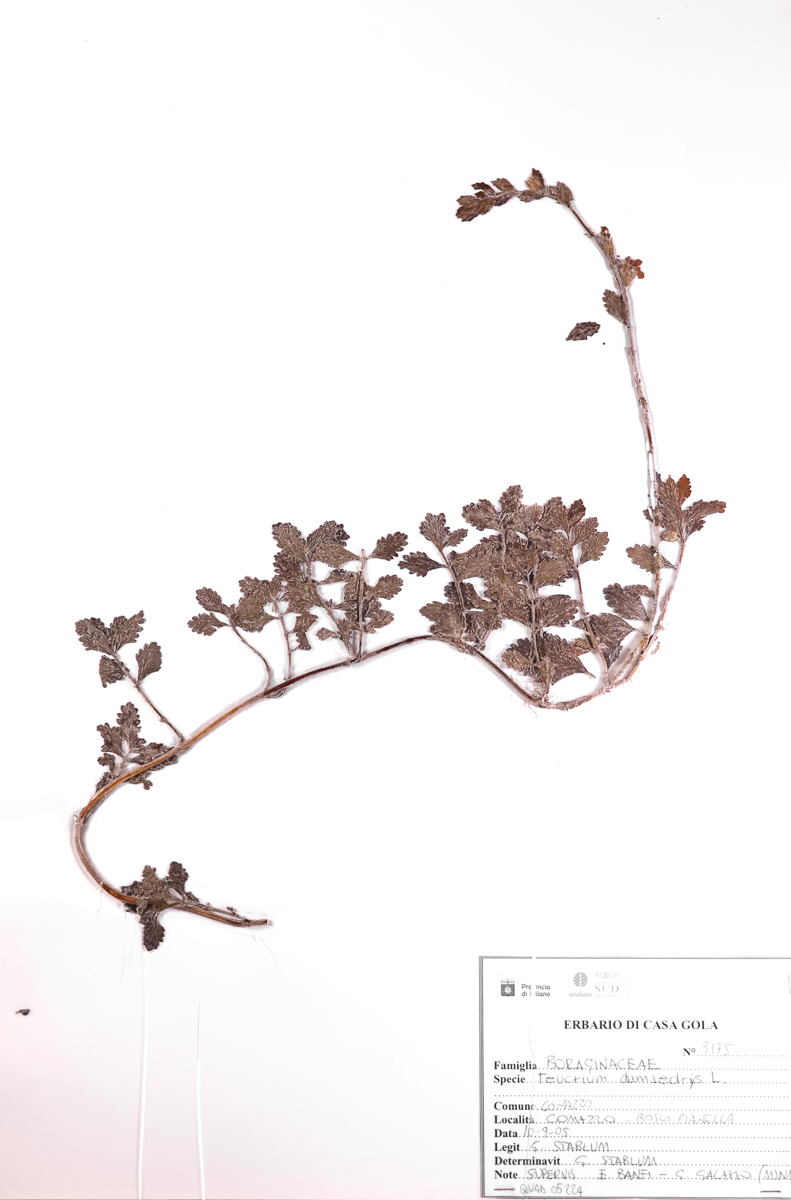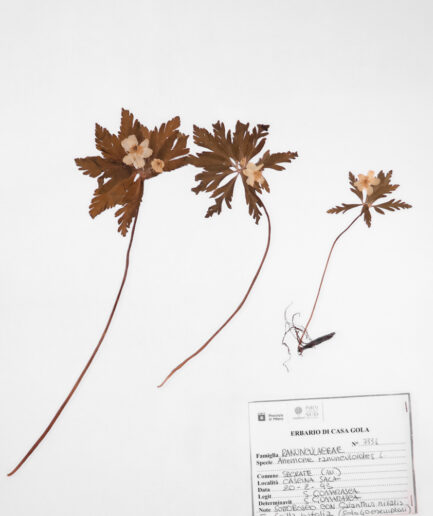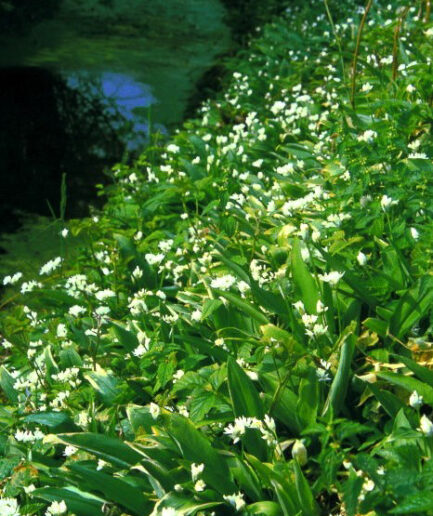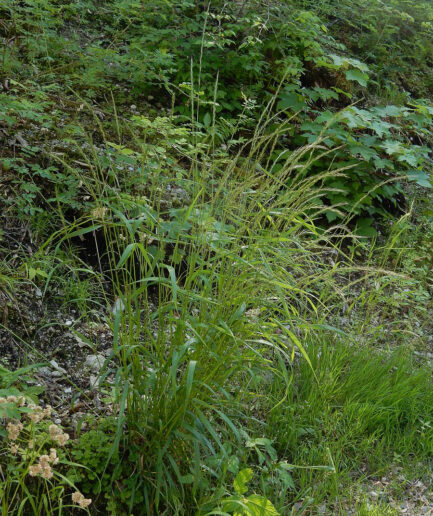Wall germander
Scientific name: Teucrium chamaedrys L.
Family: Boraginaceae
MORPHOLOGY
Habit and Size: Perennial subshrub, with a branched rhizome, up to 30 cm tall.
Stem: Simple stems, woody at the base and herbaceous in the aerial part, erect ascending, quadrangular, greenish-grey or brownish, very hairy especially in mountain specimens.
Leaves: Dark green, pubescent leaves, very coriaceous, opposite, the lower ones with a short petiole, the upper ones sessile, ovate or ovate-oblong, generally tapering to a wedge at the base, but sometimes spatulate, truncate, or cordate, with crenate or lobed margins, mucronate crenations.
Flowers: Inflorescences in dense spiciform clusters with fragrant, hermaphroditic flowers, grouped 2-6 in verticillasters at the axils of the upper leaves transformed into sessile bracts of various sizes and shapes, the upper and middle ones often reddish, shorter than the flowers. These, supported by the pedicel, twisted at fruiting, have a tubular-campanulate calyx with five lanceolate-triangular teeth, almost equal, shorter than the tube, ciliated and glandular, green or reddish; the corolla pink-purple or pale yellow, unilabiate, with a tube that surpasses the calyx and the single lower lip divided into 4 small lobes that overtop a large obovate lobe with a crenate or wavy and reflexed margin. Blooms from April to December.
Fruits and Seeds: The fruit is a microbasarium with 4 ovoid mericarps with a papillose surface.
DISTRIBUTION AND HABITAT
Present throughout Italy, it grows on dry meadows and rocky, sunny slopes, in xerophilous pine and oak forests, from 0 to 1,700 m.
USE
In the past, this plant was considered anti-inflammatory; antirheumatic; carminative; diaphoretic; astringent; digestive; stimulant; laxative; aromatic; diuretic; bitter; tonic. The infusion of its flowering tops was used for mouthwashes as an astringent and soothing for inflamed gums and mucous membranes and was also taken in infusion or alcoholic tincture to regulate intestinal functions and aid digestion. However, caution is advised as while the benefits of the plant are unproven, the toxic effects of some of its components, the neoclerodane diterpenes, are known to cause acute, chronic, and fulminant hepatitis. Therefore, Wall Germander is actually a hepatotoxic plant, and its consumption in any form is extremely dangerous. Before using any plant-based product (medicinal or non-medicinal) for therapeutic or similar purposes, it is always advisable to consult your doctor in advance. The liquor industry used it for its aromatic and bitter properties in the preparation of vermouth, digestives, aperitifs, and beverages in general.
Photos: freely licensed from Saxifraga and Ed Stikvoort, Jan van der Straaten, Rutger Barendse


